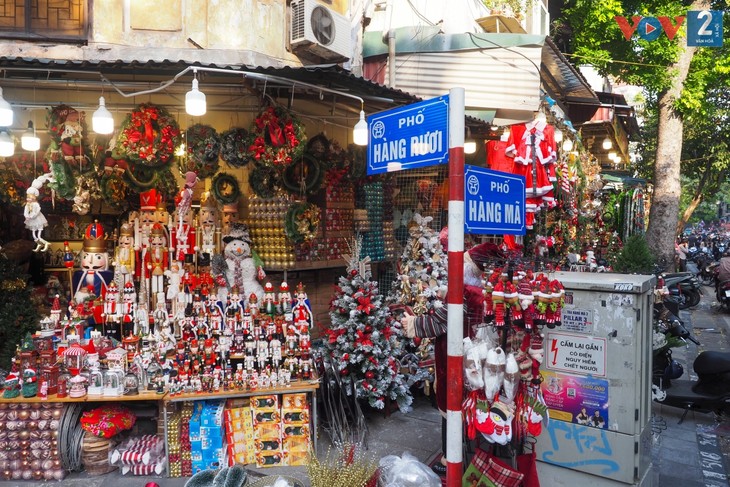 Hang Ma street is known for selling decorations for every occasion: birthdays, weddings, the Mid-Autumn Festival, Halloween, Christmas, and both New Years. (Photo: VOV) Hang Ma street is known for selling decorations for every occasion: birthdays, weddings, the Mid-Autumn Festival, Halloween, Christmas, and both New Years. (Photo: VOV) |
A few streets keep a link to their original trade and craft
Besides Hanoi’s architecture, landscape, and culture, the Old Quarter attracts those looking to explore its traditional craft streets, a unique feature that can be found nowhere else in Vietnam.
Architect Dao Ngoc Nghiem, Vice President of the Vietnam Urban Planning and Development Association said: “Hanoi’s Old Quarter is a typical venue with houses of ancient, urban architecture. Its unique economic aspect is the craft streets. There are a number of festivals by the craft guilds organized at communal houses, temples, and pagodas. The culture and the lifestyle of the local people make Hanoi’s Old Quarter different and rare in the world. It’s a combination of culture, economics, and urban planning and architecture.”
For hundreds of years, most of the craft streets have started their names with “Hang” followed by the goods sold there. For example, Hang Ma street sold votive paper, Hang Giay sold footwear, Hang Muoi sold salt, and Thuoc Bac sold traditional herbs. The Old Quarter is seen as a magnet of Hanoi which welcomed nearly 400,000 foreign tourists in the first 9 months of this year.
Hanoi has undergone drastic changes over the past decades. The Old Quarter has become a tourist hub with hotels, restaurants, cafes, and clothing stores springing up like mushrooms. Only a few streets have kept a link to their original trade until today like Hang Bac which sells silver, Hang Ma selling votive papers, and Hang Gai selling silk and other types of garments.
Hang Bac used to have many silver craft workshops. It’s still known for having many gold and silver shops, but very few silversmiths still live and work here.
A woman shared her nostalgia: “The old crafts have gradually disappeared. We are still selling many traditional craft products but the production facilities have been moved. The shops here only sell products. We also sell many trendy items alongside original craft products. Everyone regrets it, but it’s difficult to preserve the past.”
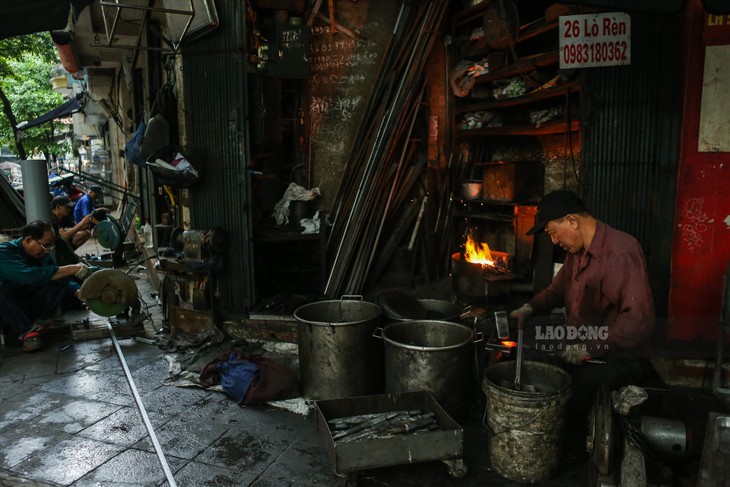 Nguyen Phuong Hung is the last craftsman from a three-generation blacksmithing family on Lo Ren street. (photo: Laodong) Nguyen Phuong Hung is the last craftsman from a three-generation blacksmithing family on Lo Ren street. (photo: Laodong) |
Lo Ren, Blacksmith Street, has changed a lot. Blacksmithing families have shifted to selling iron products and construction materials. Manual work has been replaced by milling, cutting, and welding machines.
There is only one blacksmith still stoking the fire. Nguyen Phuong Hung is the last craftsman from a three-generation blacksmithing family. Whether it’s a blistering 40 degrees Celsius or a frigid minus 10 degrees Celsius, 60‑year‑old Hung fires his furnace from 9 a.m. to 1 p.m. and from 2 p.m. to 6 p.m. as part of his daily routine. He works next to the furnace with hammers, tongs, an oil barrel, and a salt barrel.
While earning a living, Hung keeps honing his skills to improve his product quality. Hung’s small workshop is a popular spot with visitors.
“I try to ensure the quality and appearance of my products. I still use coal to fuel my furnace. DaSy blacksmithing village now mostly uses electric furnaces for industrial production. Here I use manual tools. I don’t have machine hammers. I have clever hands and creativity to make lively, unique items,” said Hung.
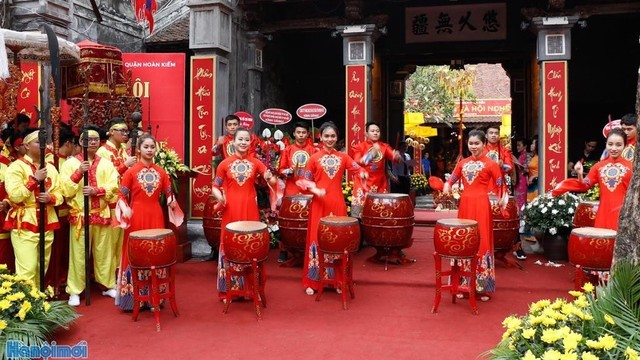 Kim Ngan Temple Festival on Hang Bac street was held in April, 2023. (photo: thanglong.chinhphu.vn) Kim Ngan Temple Festival on Hang Bac street was held in April, 2023. (photo: thanglong.chinhphu.vn) |
Heritage houses and festival revived to promote traditional crafts
Nguyen Thi Thuy Lan, Deputy Head of the Management Board of Hoan Kiem Lake and Hanoi’s Old Quarter, says the Board has worked with the local authorities to revive traditional festivals and honor traditional crafts.
“We have organized many activities to mark Vietnam’s Heritage Day on November 23rd and national ceremonies to promote the traditional values of Hanoi’s Old Quarter and Hoan Kiem Lake. Early this year we held the Kim Ngan Temple Festival on Hang Bac street. Local people and artisans from other craft villages attended the event. In the Old Quarter, the sacred ritual was revitalized. It has inspired people to get involved in preserving our heritage,” Lan said.
Kim Ngan Temple, which was built during the Le Dynasty in the late 15th century, is dedicated to the founders of hundreds of traditional crafts in Hanoi. Many artisans and craftsmen who worked here built this temple to honor the ancestor‑founders of their crafts. The recognition of the temple as a cultural and historical relic has encouraged Hanoians to preserve and promote their traditional crafts.
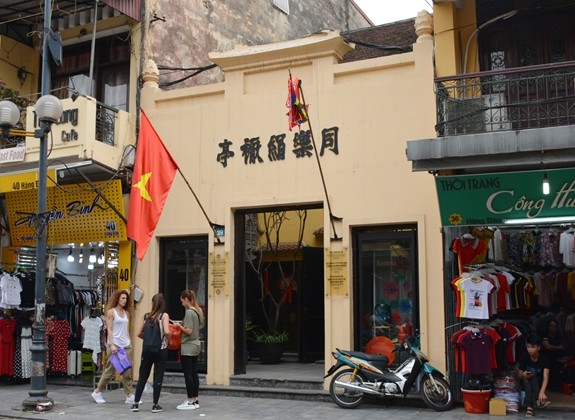 The front of Dong Lac heritage house at 38 Hang Dao street (photo: qdnd.vn) The front of Dong Lac heritage house at 38 Hang Dao street (photo: qdnd.vn) |
Dong Lac communal house, which was built in the 17th century, is at 38 Hang Dao street. It’s listed as a national heritage house, along with Kim Ngan Temple on Hang Bac street, Quan De Ttemple and Quang Dong house on Hang Buom street, and an ancient house on Ma May street.
All the relics hold regular events and are open to the public, says Nguyen Thi Thuy Lan, Deputy Head of the Management Board of Hoan Kiem Lake and Hanoi’s Old Quarter.
“At the Dong Lac house, we work with Hanoia, a company that makes lacquer products, to organize exhibitions, and invite artisans and experts to discuss and demonstrate lacquer making, traditional and modern methods, and contemporary modifications and applications. We welcome the participation of young craftsmen and artists, who are passionate about learning and inheriting traditional crafts.”
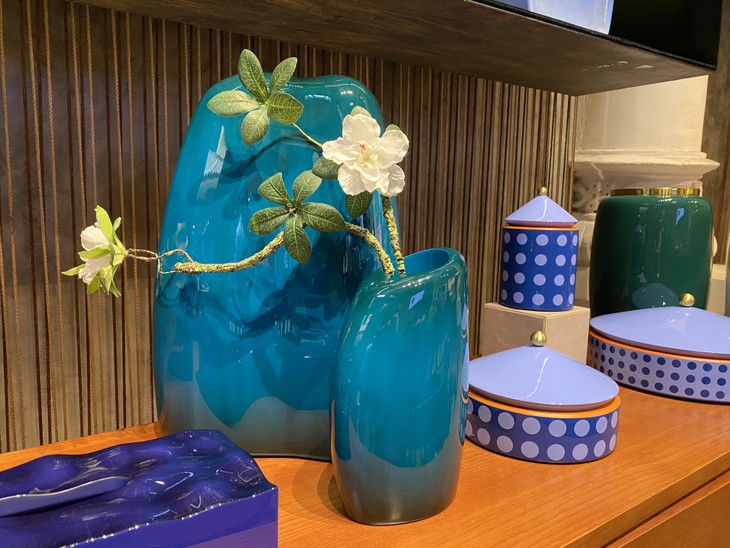 Lacquerware displayed at Dong Lac heritage house (photo: Cam Thi) Lacquerware displayed at Dong Lac heritage house (photo: Cam Thi) |
Dong Lac house became severely dilapidated by time. In 2000, the Ha Noi authorities collaborated with the Toulouse, France, to restore it as a heritage house for tourism. Dinh Van Tai, Marketing Director of Hanoia, said: “Originally this was a temple, a worship communal house of the silk trade. But then a family moved in and renovated it to fit their needs. When Toulouse city carried out its restoration project, they respected history and preserved the status quo. Inside a temple of oriental design, there are some Indochinese architectural imprints. When Hanoia started displaying lacquer products here, our French designers added some interior decor to make the space more modern while still respecting its history.”
Hanoia lacquer products include flower pots, decorative vases, jewelry, and tea sets of unique design and color. It has partnered with Hermes and other global brands to produce world-class lacquerware products in Vietnam.
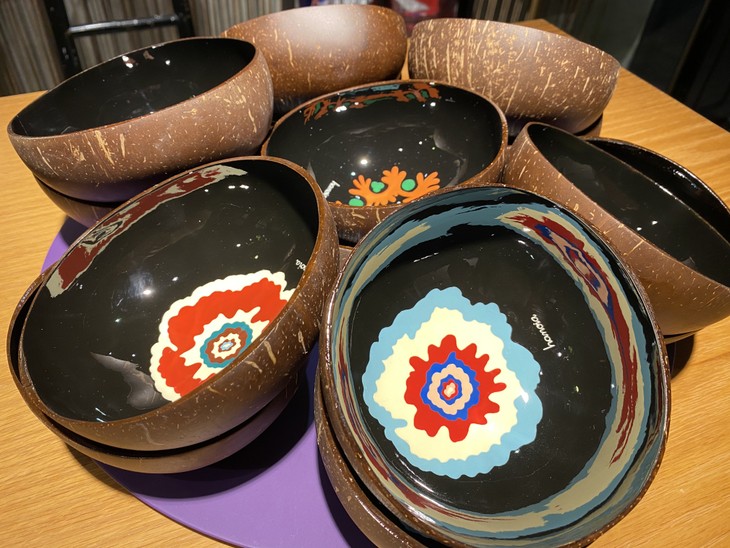 Hanoia's lacquer products (photo: Cam Thi) Hanoia's lacquer products (photo: Cam Thi) |
Artisan Tran Van Kien, who is in charge of lacquer production and product quality at Hanoia, said the old lacquerware production process used sap extracted from the wax tree, a native plant grown in Phu Tho province. Now Hanoia uses high quality paints of international brands so their products can qualify for global quality control certificates.
“I’ve been making lacquerware for more than 10 years. I love this art very much. I focus on creating visual effects for the products. All our products are handmade following traditional techniques of painting and polishing. The material is the most important factor to ensure product quality at the international standard. Lacquer tableware uses materials safe for health,” said Kien.
The Management Board of Hoan Kiem Lake and Hanoi’s Old Quarter has worked with the Department of Tourism to verify that Dong Lac heritage house and other tourist venues in the old town are qualified.
Mrs. Lan said: “We have supported and encouraged businesses, including Hanoia artisans, to get involved in promoting traditional crafts and local tourism. During the Hanoi Creative Design Festival and Heritage Week in November, Hoan Kiem Lake, Hanoi’s Old Quarter, and the surrounding area was recognized as a municipal-level tourism area. This recognition will benefit businesses and the locality.”
The restoration of ancient houses and temples that worship the founders of crafts, and the re-enactment of worship rituals and festivals have revived the soul of Hanoi’s Old Quarter and promoted its value for social and economic development.